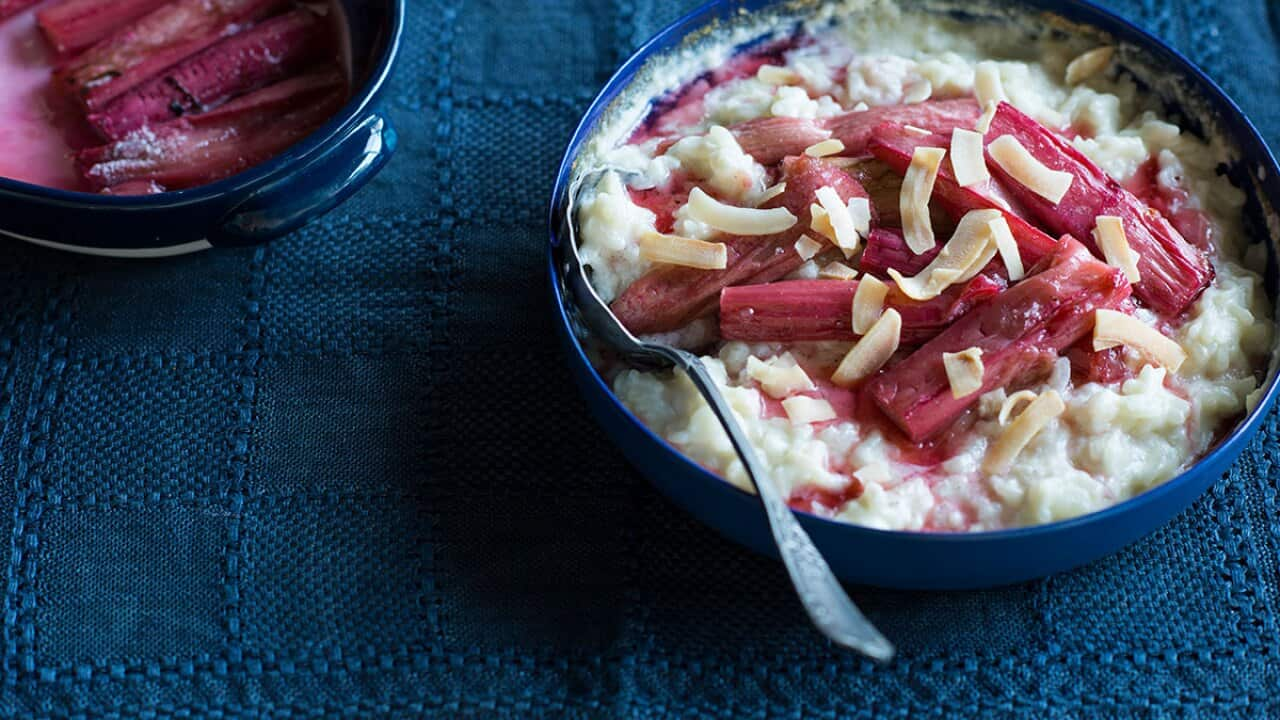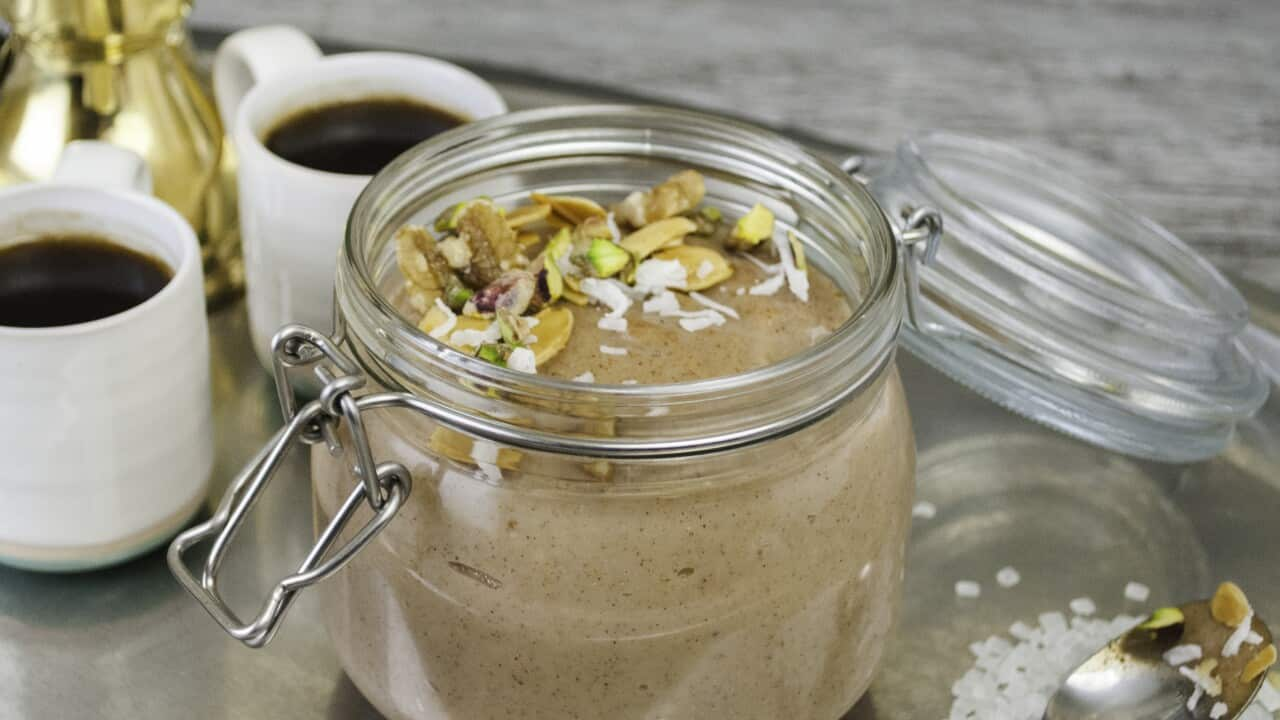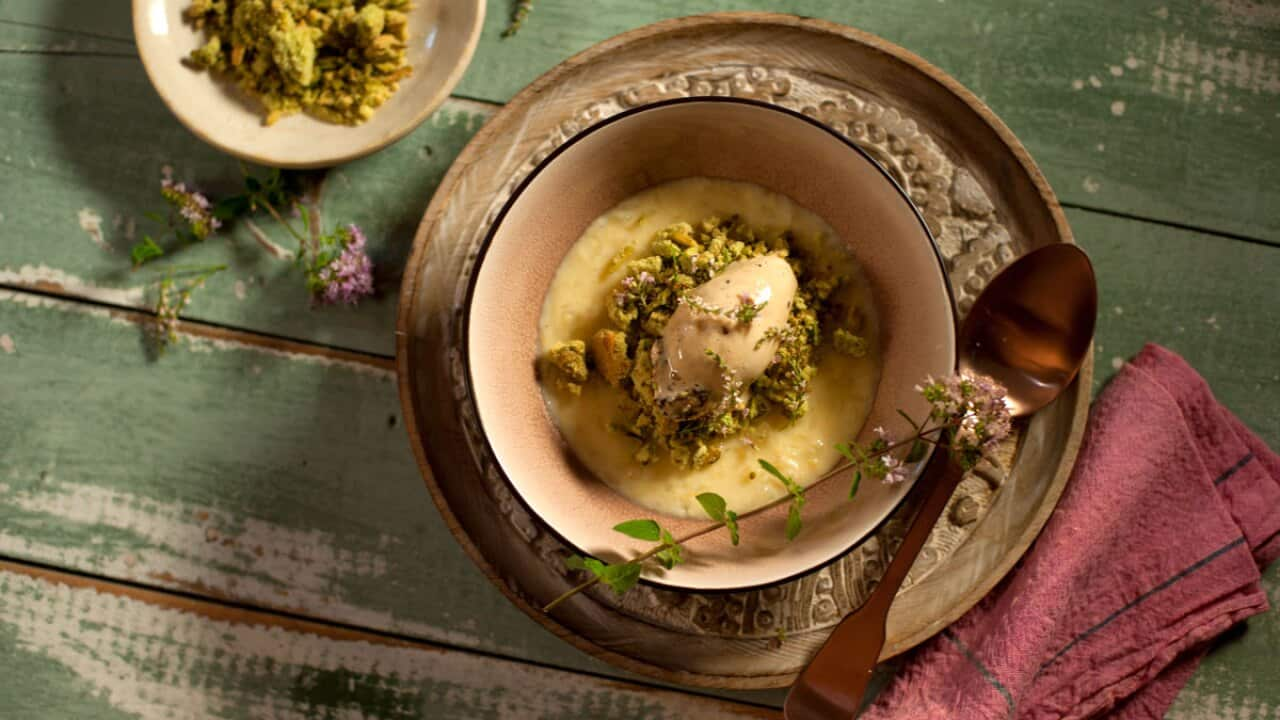In Morocco, for example, cooks will usually add almonds, orange peel or orange water, and occasionally, sultanas. In Nordic countries, a vanilla pod and a knob of butter are considered common features. Some countries will throw in an egg or two, others a host of spices, but nothing is as simple and as complicated as Turkish rice pudding () in my family home. Oh, you won’t find the key ingredient in any cookbook or supermarket shelf but on the off-chance, you want to make an authentic sütlaç of your own, you’ll need ample amounts of very public (and incredibly audible) suffering, just so everyone understands just how much you love them. That’s what ‘real’ sütlaç is all about. When I was a child, I noticed other parents fixed boo-boos and big emotions with hugs, Band-Aids and extensive talks. My dad? He would take one look at me and run straight to the kitchen where he would begin randomly pouring milk, sugar and rice into a large pot. “Don’t worry! I’ll make sütlaç and everything will be okay,” he said.
When I was a child, I noticed other parents fixed boo-boos and big emotions with hugs, Band-Aids and extensive talks. My dad? He would take one look at me and run straight to the kitchen where he would begin randomly pouring milk, sugar and rice into a large pot. “Don’t worry! I’ll make sütlaç and everything will be okay,” he said.

There are many versions of rice pudding around the world.
I would first marvel at his complete disregard for measurements (somehow it all worked out just fine), and then, as the sweat began dripping down his forehead and he leaned on the bench with one arm, the other stirring a wooden spoon through the milky mixture furiously, he would begin what I now refer to as ‘the sütlaç monologues’. “Dilvin, sometimes people put starch in their sütlaç and do you know why? Because they don’t really love their families. For sütlaç to be perfect and light, all you need is milk, sugar and rice – nothing else, no starch, no cornflour, nothing,” he'd say, a tortured expression on his face.
“Dilvin, sometimes people put starch in their sütlaç and do you know why? Because they don’t really love their families. For sütlaç to be perfect and light, all you need is milk, sugar and rice – nothing else, no starch, no cornflour, nothing,” he'd say, a tortured expression on his face.

Chef Shane Delia makes a version of sütlaç, which is topped with pistachio crumble and marshmallow ice-cream.
“Obviously this takes a lot more work – starch makes the pudding set quickly, but like this, you have to stand here and keep stirring for an hour. But do you know what? I suffer because I love you. One day, you’ll understand and do the same for your children. Parents suffer for their children.”
You’ll need ample amounts of very public (and incredibly audible) suffering, just so everyone understands just how much you love them. That’s what ‘real’ sütlaç is all about.
I wish I could tell you this is where the monologue ended, but it went on until he put his creamy wooden spoon down a solid hour later – themes of love, suffering, torture, more love, and dessert swimming through my mind so I’d forgotten what I was originally upset about. By the time we’d sit down to eat once the sütlaç had cooled, my red-faced father (now in a different, sweat-free T-shirt) would lay down to rest. Because of his love for me, or perhaps because he wanted to suffer some more (I’m now very confused about the relationship between the two), I would eat his share – sprinkled liberally with cinnamon – as well. More than three decades on, I have two daughters who adore sütlaç just as much as their mother. And, of course, no other sütlaç lives up to the one their mother lovingly makes for them at home. Little noses get turned up in eateries all around Turkey, and thumbs are turned down whenever someone else presents them. Don’t even get me started on their reactions when they see commercial rice puddings on supermarket shelves. “Starch would be the least of their problems,” my eldest daughter says when she reads the ingredients on the packaging. “Mum, can you make sütlaç for us when we get home?”
More than three decades on, I have two daughters who adore sütlaç just as much as their mother. And, of course, no other sütlaç lives up to the one their mother lovingly makes for them at home. Little noses get turned up in eateries all around Turkey, and thumbs are turned down whenever someone else presents them. Don’t even get me started on their reactions when they see commercial rice puddings on supermarket shelves. “Starch would be the least of their problems,” my eldest daughter says when she reads the ingredients on the packaging. “Mum, can you make sütlaç for us when we get home?”

Dilvin Yasa appreciated her father's spice-topped rice pudding.
Sigh. You know what happens next, don’t you? Cut to my girls sitting on the sofa, doing homework or watching a TV show, and me in the kitchen stirring furiously as I begin the spiel they already know so well.
“Don’t ever doubt my love for you,” I tell them. “On days when you think I suck or that I’m the worst mother in the world, I want you to remember how I would stand here, stirring at this sütlaç for an hour because that’s how much I love you.”
The only difference between my dad and I? After all that work, there’s no way I’d let anyone eat my share.
The proof is in the (rice) pudding

Baked rice pudding with rhubarb












